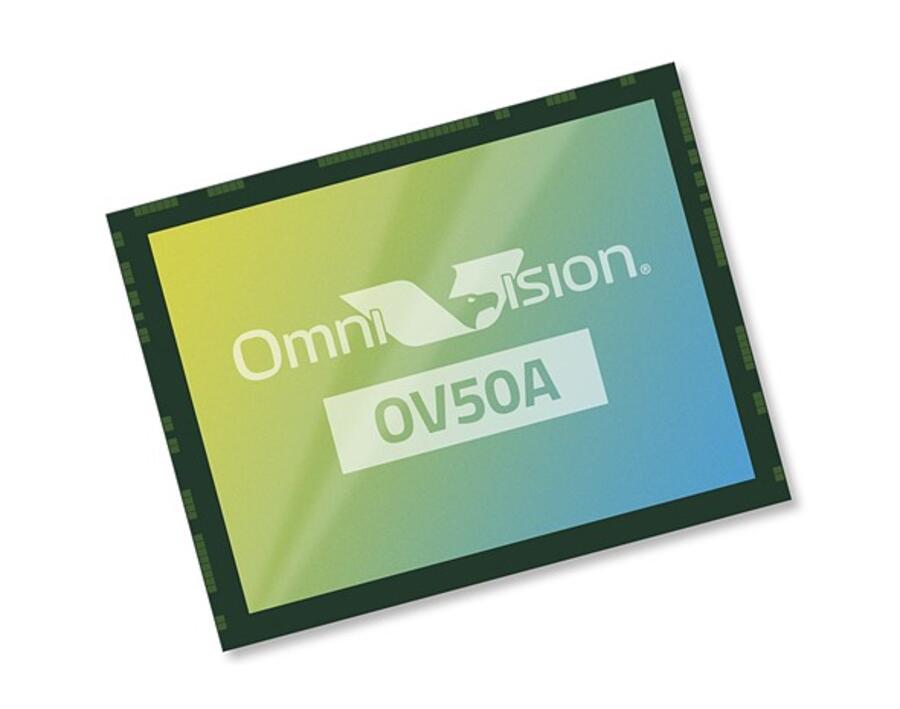New OmniVision 50MP OV50A Sensor: 100% Phase Detection Coverage for Superior Autofocus
OmniVision announced its first image sensor with 100% phase detection coverage for superior autofocus in flagship and high end smartphones. Sensor manufacturer OmniVision has announced the specifications for the OV50A, a new 50MP 1/1.5″ smartphone camera sensor that offers 100% phase detection autofocus (PDAF) coverage.
“Combination of 1.0 Micron Pixel and 1/1.5” optical format with selective conversion gain, 50MP resolution and QPD provides premium still and 8K video captures for wide and ultrawide main cameras”
The sensor can output 8K video at 30 frames per second (fps) as well as 4K video at 90 fps and 1080p at 240 fps. The 4K video can use near-pixel-binning for improved low-light performance when light is at a premium. Video output maxes out at 3.5Gbps via the sensor’s CPHY MIPI interface.
OmniVision suggests this sensor is destined for the standard and ultra-wide-angle cameras inside flagship smartphones. The sensor is said to be available in the second quarter of 2021. Here is the press text :
February 16, 2021 12:07 PM Eastern Standard Time SANTA CLARA, Calif.–(BUSINESS WIRE)–OmniVision Technologies, Inc., a leading developer of advanced digital imaging solutions, today announced in advance of Mobile World Congress Shanghai the OV50A image sensor, combining 50MP resolution, 1.0 micron pixel size, selective conversion gain and a 1/1.5” optical format with quad phase detection (QPD) autofocus technology and on-chip remosaic. QPD enables 2×2 phase detection autofocus (PDAF) across the sensor’s entire image array, for 100% coverage. Unlike the microlens and half-shield PDAF technologies, which only capture 3-6% of the phase detection data, QPD uniquely captures 100% of this data for improved distance calculation, faster autofocus and better low-light performance. In combination with on-chip remosaic for the QPD color filter array, the result is premium image quality for the wide and ultrawide main cameras in flagship and high end smartphones.
“One of the biggest selling points for mobile phones is camera performance, and they have been steadily closing the gap with DSLR cameras for years,” said Arun Jayaseelan, staff marketing manager at OmniVision. “Our QPD autofocus technology now makes that gap even smaller, by bringing DSLR level autofocus performance to smartphone cameras.”
The OV50A image sensor also provides the best low-light performance in its class, via the unique combination of a large 1.0 micron pixel size, selective conversion gain’s low-noise, high conversion gain mode, and its distinction as OmniVision’s first high end mobile sensor to be offered in the large 1/1.5”optical format. Additionally, this sensor offers excellent HDR through 2- and 3-exposure staggered HDR timing, along with selective conversion gain for the optimum balance between low-light image quality and HDR. These features provide mobile designers with maximum flexibility to select the best HDR method for the contrasting light and dark areas in any scene.
Built on OmniVision’s PureCel® Plus-S stacked die technology, the OV50A integrates an on-chip, QPD color filter array and hardware remosaic, which provides significantly improved autofocus performance along with high quality, 50MP Bayer output, or 8K video, in real time. This sensor can also use near-pixel binning to output a 12.5MP image for 4K2K video with four times the sensitivity, yielding 2.0 micron-equivalent performance for preview and video. In either case, the OV50A can consistently capture the highest quality images, as well as enabling 2x digital crop zoom with 12.5MP resolution and fast mode switch.
Output formats include 50MP, or 8K video, with QPD autofocus at 30 frames per second (fps), 12.5MP with QPD autofocus at 60fps, 4K2K video with QPD autofocus at 90fps, 1080p at 240fps and 720p at 480fps. All of these options can be output at up to 3.5 Gsps per trio, over the sensor’s CPHY MIPI interface.









